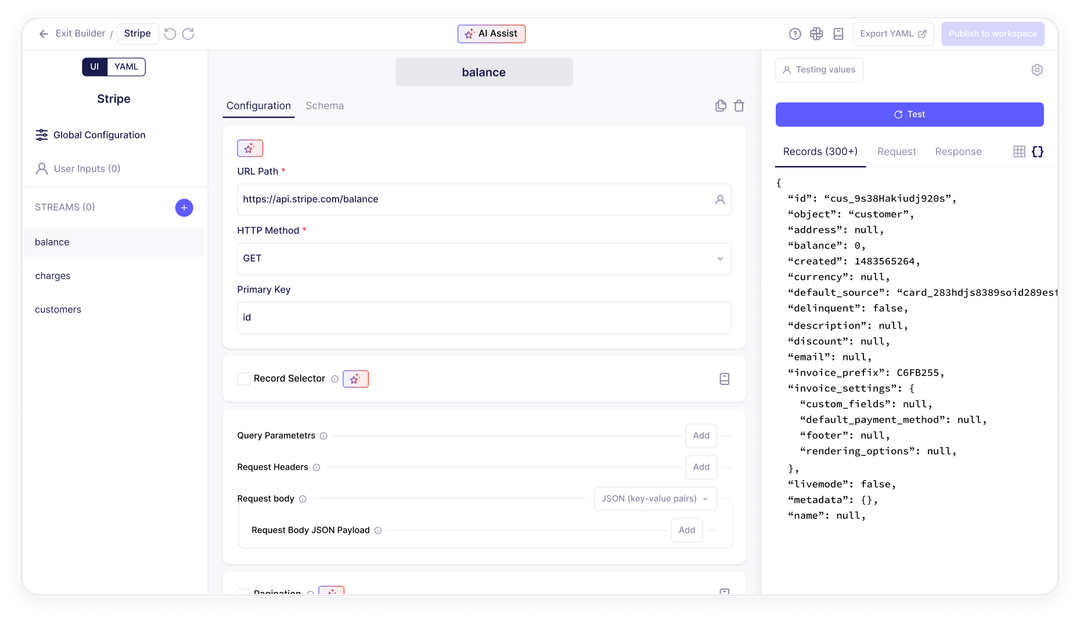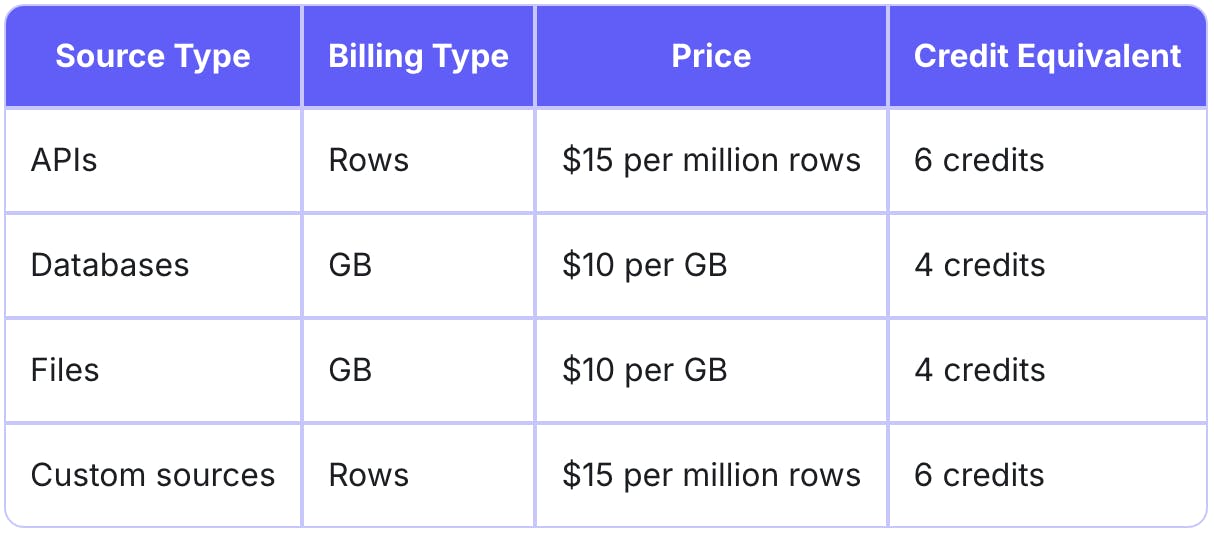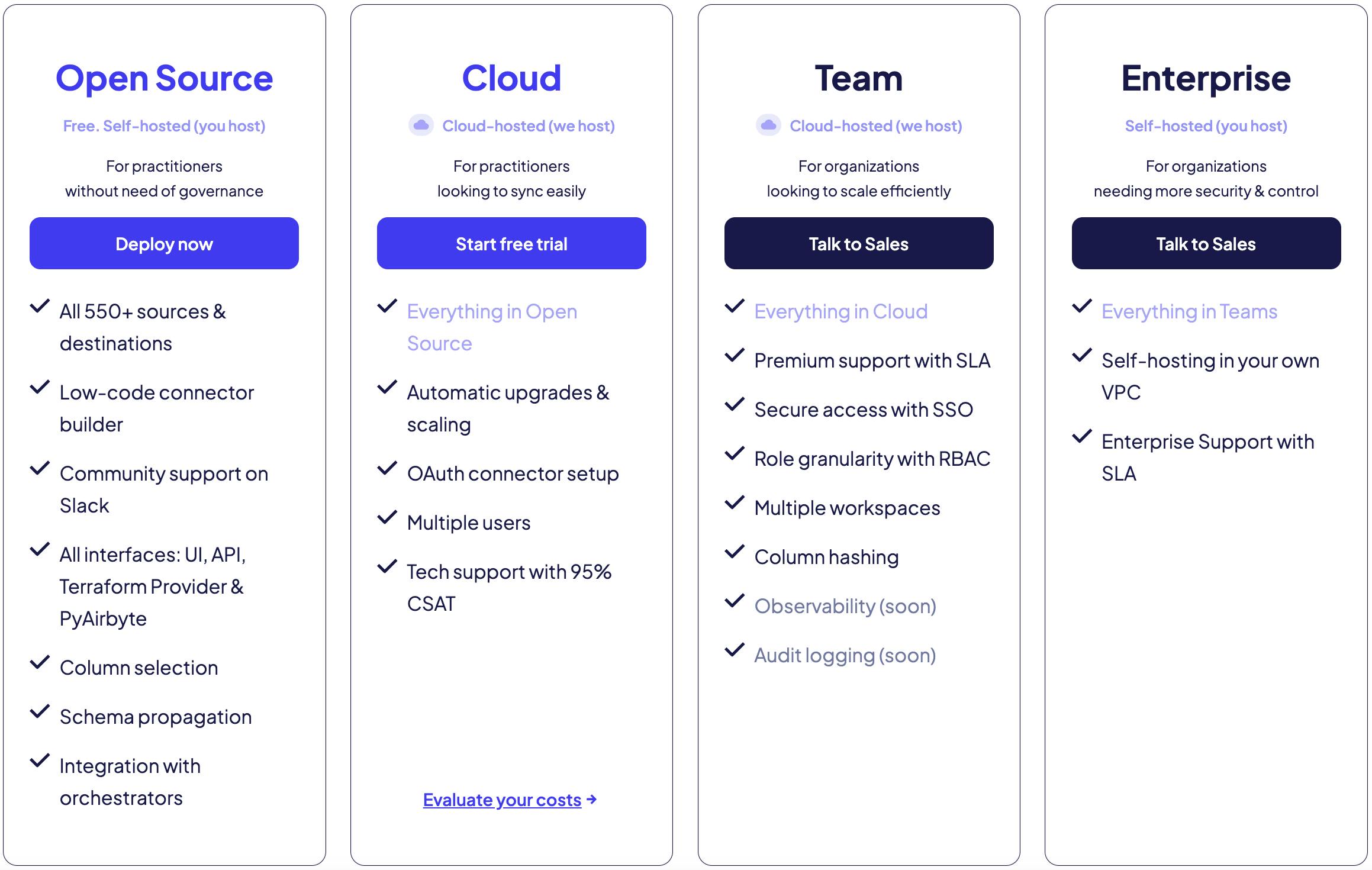Thesis
In 2024, 402.9 million terabytes of data were created, captured, or consumed every day, totaling 147 zettabytes (equivalent to one billion terabytes) annually. This figure was predicted to reach 171 zettabytes by 2025. As of September 2024, nearly 90% of the world’s data had been generated between 2021-2023, with global data volumes doubling roughly every four years. In 2024, 83% of organizations surveyed processed terabytes or petabytes (equivalent to 1K terabytes) of data daily, highlighting the scale of data management challenges modern enterprises face. This surge in data volume is accompanied by an increasing diversity of data sources and formats, including new data formats being collected from IoT devices and sensors and data types being created for AI inference.
In 2024, 78% of surveyed teams reported struggling with data orchestration, tool complexity, and managing data variety, volume, and quality. Additionally, 86% of IT and data professionals prioritized scalability, performance, and data transformation capabilities when selecting integration tools. The integration of artificial intelligence and machine learning technologies in businesses is also increasing, with AI-powered data integration tools leveraging advanced algorithms and predictive analytics to automate and streamline the data integration process.
Airbyte offers an open-source data integration platform with a suite of pre-built connectors, allowing users to sync data from over 550 sources and applications as of April 2025. The platform provides features like a user-friendly interface, API access, and integration with popular tools like dbt and Terraform. Airbyte's approach focuses on simplifying the Extract, Load, Transform (ELT) process, enabling organizations to build and maintain custom connectors. The company has also introduced an AI Assistant that enables users to create connectors in minutes by simply providing API documentation.
Founding Story

Source: Accel
Airbyte was founded in 2020 by Michel Tricot (CEO) and John Lafleur (COO). Tricot’s professional journey in data began in 2008 at FactSet in Paris, where he worked as an R&D Engineer dealing with financial data. In 2011, he moved to the United States, joining Rapleaf, a marketing data and software company, and later its spin-off, Liveramp, a data connectivity platform offering services like data onboarding and transferring offline data. These companies, operating in the advertising technology and marketing technology sectors, exposed Tricot to handling massive amounts of data efficiently, serving millions of users, and processing vast numbers of transactions online.
It was during his time at Liveramp that he first experienced the challenges of building data management pipelines. At Liveramp, Tricot's role expanded to managing the data integration team, responsible for moving hundreds of terabytes of data daily. This experience proved invaluable, providing him with deep insights into the complexities of large-scale data operations. Following his tenure at Liveramp, in 2012, Tricot became a founding member of rideOS, a data and API platform for autonomous vehicle companies and automobile manufacturers, which was later acquired by GoPuff for $115 million.
Lafleur’s entrepreneurial journey began in 2008 with As-App, a ski station app that was later acquired by Lumiplan. He then co-founded StreamNation, a cloud storage platform for multimedia content, in 2010, which was acquired by SmugMug in 2016. Lafleur's next venture was CodinGame, a company providing software coding tests, where he served in various roles, including COO and CEO, from 2016 to 2018. In 2018, he co-founded Anaxi, a project management platform for software project collaboration, serving as COO until 2019.
Tricot’s and Lafleur’s paths converged in San Francisco in 2013 when they met through their wives, who were co-workers. Over the years, they collaborated on several side projects, which, while not serious ventures, allowed them to develop a strong working relationship. In 2019, Tricot and Lafleur decided to start a company together. After brainstorming various ideas, they ultimately settled on tackling the problem of data integration, which they both had experience with. They applied to Y Combinator and were accepted to the Winter 2020 batch. Throughout the first few months of Y Combinator, Tricot and Lafleur built Daxtarity, a platform to assist marketing teams in collecting more data on customers interacting with websites and campaigns.
However, the COVID-19 pandemic and resulting pressures on corporate marketing spend forced Tricot and Lafleur to pivot. Through customer interviews, Tricot and Lafleur identified a common pain point: many organizations were building custom pipelines alongside existing solutions to cover integrations that weren't supported. Further, their shared experiences of repeatedly rebuilding data integration pipelines from scratch for different products motivated them to create a comprehensive solution. These insights solidified their vision for Airbyte - to create a versatile, open-source data integration platform that could address the full spectrum of data movement needs across industries.
In late 2020, Tricot and Lafleur released the first version of Airbyte, an open-source data integration platform designed to connect data from various sources to their destinations. The founders' vision was to commoditize data integration pipelines across all industries and organizations. Within just six months of its launch, Airbyte had already attracted 600 companies using its platform to sync data. In March 2021, the company secured a $5.2 million seed round led by Accel, and just two months later, in May 2021, Airbyte announced a $26 million Series A round led by Benchmark.
In June 2024, Airbyte expanded its executive team with the addition of Joel Newbert as VP of Finance and Operations, who was previously the head of finance at CapitvatelQ and director of strategy and finance at rideOS, where he worked with Tricot. He departed Airbyte in March 2025. In February 2025, Airbyte announced Ashwini Gillen as Head of Sales and Mario Mascatiello as Head of Growth. Gillen joined with more than 20 years of sales leadership experience at companies including Twilio and IBM. Moscatiello served as an advisor to Airbyte since 2020 and had previously served as Head of Growth at Pusher, a real-time technology and API company, and GitBook, a documentation tool.
Product
Airbyte is an open-source data integration platform designed to streamline the process of processing data and making it usable. Data integration is the process of combining data from different sources into a unified, usable format for analytics, reporting, or machine learning. It makes sure that data from different systems is merged and standardized. By eliminating data silos and inconsistencies, integration improves automation and reporting.
Airbyte supports various data integration approaches, including ETL (extract, transform, load) and ELT (extract, load, transform). It handles both structured and unstructured data, making it suitable for diverse use cases, including AI and machine learning applications.
Teams working with multiple data sources often find that data isn’t ready for immediate use. They need to extract data, load it into a system, and transform it into a consistent and usable structure. Airbyte allows users to extract, load, and transform data from various sources into destination systems like data warehouses, lakes, and databases.
Airbyte's product suite includes a no-code interface for creating data pipelines, a library of pre-built connectors, and tools for building custom connectors. Data pipelines automate the movement and transformation of data, while connectors facilitate data flow between sources and destinations, handling authentication, API requests, and formatting. The platform offers both cloud-hosted and self-managed solutions.
Architecture
Airbyte's architecture is built on a modular and scalable foundation, consisting of several components that work together to facilitate efficient data integration. At its core, the platform employs a microservices framework that includes a Config API Server, which serves as the main controller for all operations within Airbyte. This server manages configurations, creates sources and destinations, and invokes various operations. The Config Store and Scheduler Store components maintain connection configurations, credentials, sync frequencies, and job statuses, ensuring that all necessary information is readily available for data synchronization tasks.
Another element of Airbyte's architecture is the Temporal Service, which manages task queues and workflows, ensuring efficient scheduling and sequencing of data integration jobs. The Worker component reads from these task queues and executes the connection scheduling and sequencing logic, interfacing with the Workload API to enqueue specific tasks. This design allows for dynamic scaling and efficient resource utilization, particularly when handling large datasets.
The Workload API and Launcher components play roles in the execution of data integration tasks, with the Workload API providing an HTTP interface for enqueuing workloads and the Launcher consuming events from the Workload API to interface with Kubernetes for launching workload pods.
Airbyte's architecture also includes components for maintenance and upgrades, which are needed to ensure the platform's long-term stability and performance. The Cron component handles tasks such as cleaning the server and sync logs, updating connector definitions, and sweeping old workloads. The Bootloader component is responsible for upgrading and migrating database tables and confirming that the environment is ready for operation.

Source: Airbyte
Interface
Airbyte offers both a web-based UI and an API, making it accessible to users with varying levels of technical expertise. Through the dashboard, users can navigate between different sections such as Sources, Destinations, and Connections, allowing them to configure and monitor their data pipelines. The UI also provides a high-level overview of active connections, recent jobs, and system health, giving users insights into their data integration processes.
Users can configure sources and destinations by following a step-by-step process guided by the UI. The interface lets users select data streams to replicate, configure sync frequencies, and customize schema mappings. Additionally, Airbyte's UI facilitates real-time testing and debugging of connectors, providing feedback on connector performance and enabling users to iterate on their configurations.
The platform also supports custom connector configuration through its Connector Builder UI, which is built on top of a low-code YAML format. This feature allows developers to define the behavior and capabilities of connectors without using complex code.

Source: Airbyte
The Airbyte interface also includes monitoring and logging capabilities. Users can access detailed sync history and logs directly through the UI to troubleshoot issues and optimize data pipelines. The platform's integration with visualization tools like Apache Superset allows users to create custom dashboards and gain insights from their synchronized data.
Connectors
Airbyte's connectors are the components that enable data integration between sources and destinations. The platform offers a catalog of pre-built connectors, covering a range of data sources, including databases, APIs, file storage systems, and data warehouses. These connectors are packaged as Docker images, adhering to the Airbyte specification, which allows for flexibility in their implementation and deployment across different environments. Airbyte supports two primary types of connectors: source connectors for extracting data from various systems, and destination connectors for loading data into target systems.
The platform provides a Connector Development Kit (CDK) that aims to simplify the process of building new connectors. This kit includes templates and tools that simplify connector creation, making it accessible to those with limited coding experience. While the platform offers a comprehensive set of pre-built connectors, users can develop and use custom connectors tailored to their specific requirements. These custom connectors can be built using many technologies, including Java, Python, or any other language, as long as they adhere to the Airbyte specification. Airbyte allows users to share their custom connectors with others through the Airbyte GitHub repository.
Data Syncing and Transformation
The platform supports various sync modes, including full refresh and incremental syncing, allowing users to manage data replication based on their specific requirements. Full refresh synchronization retrieves all available data from the source and writes it to the destination, while incremental sync only replicates new or modified data since the last update, reducing data transfer volume and improving performance. Airbyte also supports Change Data Capture (CDC) for real-time data replication from databases like Postgres and MySQL.
For data transformation, Airbyte provides basic normalization out of the box, which converts raw JSON data into structured tables. It integrates with dbt (data build tool), allowing users to define and execute complex SQL-based transformations. This integration enables the creation of end-to-end ETL data pipelines, where transformations can be configured to run immediately following data syncs. Additionally, Airbyte supports custom transformations using SQL scripts or by leveraging the user's own dbt project.
Airbyte's approach to data transformation extends to the ELT (Extract, Load, Transform) paradigm. This allows users to load raw data into their destination systems and perform transformations afterward, which can be particularly beneficial for handling large datasets and maintaining data lineage. The platform also supports transforming raw data from multiple sources into vector embeddings for GenAI workflows.
Scalability
Airbyte's architecture, built on a microservices framework, allows for dynamic scaling of resources to meet varying workload demands. Airbyte's worker-based system facilitates parallel processing of data synchronization tasks, enabling the management of multiple concurrent jobs. This scalability extends to both cloud-hosted and self-managed deployments, with Kubernetes compatibility providing additional flexibility for scaling operations.
Airbyte handles incremental synchronization, which reduces the amount of data transferred and processed during each sync operation. This feature is particularly beneficial for managing large datasets, as it optimizes resource utilization and reduces sync times. Additionally, Airbyte's performance can be fine-tuned through various configuration options, such as adjusting batch sizes and buffer settings.
While Airbyte demonstrates strong scalability for most use cases, extremely large-scale operations may require careful resource management. For instance, deployments handling exceptionally large datasets may encounter performance challenges that require additional optimization. In such cases, Airbyte provides options for scaling worker pods, adjusting resource allocations, and fine-tuning connector configurations to enhance performance
Community
As of April 2025, Airbyte’s Slack community had over 20K members, with dedicated channels for targeted assistance. Additionally, GitHub Discussions serve as Airbyte’s platform for in-depth technical questions and feature discussions. The Airbyte Contributor Program aims to encourage community members to build new connectors, write documentation, and make improvements to existing features. Contributors can receive benefits including cash rewards, custom-branded swag, networking opportunities, and early access to beta updates. Airbyte fosters community engagement through initiatives like daily office hours, community calls, and events. Community calls feature insights from prominent users and product updates from the engineering team.
Market
Customer
Airbyte's platform is particularly valuable for businesses dealing with large volumes of data, including sensitive personally identifiable information (PII). Airbyte’s platform is also suitable for customers seeking custom connector needs. Common use cases include consolidating data from CRM systems, messaging services, and marketing analytics platforms into a centralized data warehouse for analysis. Its client base includes companies like BetterSaver, which uses Airbyte to track customer journeys and collect data from multiple sources for marketing analytics.
Airbyte's low-code platform also enables data analysts to quickly create connectors without extensive coding, making it accessible to both technical and non-technical users. As of April 2025, notable customers of Airbyte include Peloton, Siemens, Unity, Perplexity, Monday.com, Anker, and Calendly.

Source: Airbyte
Market Size
Airbyte operates within the data integration market. In 2024, this global market was valued at $14.2 billion and was projected to reach $30.9 billion by 2030, growing at a compound annual growth rate (CAGR) of 13.8% from 2025 to 2030. This growth is driven by several factors, including the increasing volume of data generated by new and expanding enterprises and the growing need for data-driven insights across industries.
The rise of big data technologies is also fueling demand for data integration solutions, as organizations seek to manage and analyze vast amounts of unstructured and fast-paced data. Additionally, the adoption of cloud computing and the diversity of data sources are creating opportunities for data integration platforms like Airbyte to address the challenges of consolidating and analyzing data from multiple systems.
Competition
Airbyte operates in the data integration industry, specializing in open-source, community-driven solutions for data extraction and loading. Unlike proprietary platforms such as Fivetran, Hevo Data, and Matillion, Airbyte enables users to customize connectors for specific use cases.
Compared to other open-source platforms like Arch Data or dbt Labs, Airbyte focuses on pre-built connectors and user-friendly tools, making it accessible to both a technical and non-technical audience. Other workflow automation tools like Zapier cater to general application integrations rather than deep data pipelines.
Proprietary Platforms for Data Integration
Fivetran: Founded in 2012, Fivetran is an automated data integration platform that aims to simplify the process of centralizing data in analytics warehouses. In September 2021, the company raised $565 million in Series D funding led by Andreessen Horowitz, valuing it at $5.6 billion. As of March 2025, Fivetran has raised a total of $853.1 million from investors, including $125 million in debt financing from Vista Credit Partners. Other notable investors include General Catalyst, ICONIQ Growth, and Y Combinator.
Fivetran's platform is engineered to handle complex data normalization, ensure fault tolerance through automated recovery from failed syncs, and optimize integration with modern analytical databases like Snowflake, Redshift, and BigQuery. Unlike Airbyte, which adopts an open-source and fully customizable approach, Fivetran utilizes a proprietary model that prioritizes out-of-the-box functionality. As such, Fivetran targets organizations seeking a plug-and-play data solution without the need for manual configurations.
Matillion: Founded in 2011, Matillion provides a cloud-native data integration and transformation platform designed for modern data warehouses. In September 2021, the company secured $150 million in Series E funding led by General Atlantic, valuing it at $1.5 billion. As of April 2025, Matillion has raised $290 million in total funding from investors such as Battery Ventures, Sapphire Ventures, and Scale Venture Partners. Matillion’s low-code platform features visual ETL/ELT workflows, pre-built connectors, and AI-powered pipeline creation, enabling integration with cloud databases. In contrast to Airbyte’s open-source flexibility, Matillion offers a library of pre-built connectors and allows building custom connectors to pull data through REST APIs.
Hevo Data: Founded in 2017, Hevo Data aims to democratize data integration through its no-code data pipeline platform. In December 2021, the company raised $30 million in Series B funding led by Sequoia Capital India. Hevo Data has raised a total of $43 million in funding, as of April 2025. Investors of the company include Lightspeed Venture Partners and Chiratae Ventures. Hevo Data’s platform enables organizations to streamline ETL, ELT, and reverse ETL processes. Hevo Data has a library of plug-and-play integrations and allows for connecting applications through REST APIs.
Open-Source and Developer-Centric Platforms
dbt Labs: Founded in 2016, dbt Labs is an open-source platform for data transformation and analytics engineering. In February 2022, the company secured $222 million in Series D funding led by Altimeter, valuing it at $4.2 billion. As of April 2025, dbt Labs has raised $414.4 million from investors such as Amplify Partners, Andreessen Horowitz, and Sequoia. dbt Labs' platform is designed to enable data analysts and engineers to transform data in their warehouses using SQL-based models, tests, and documentation. Unlike Airbyte, which focuses primarily on data extraction and loading with pre-built connectors, dbt Labs targets the data transformation and the analytics engineering process. dbt Labs aims to help data teams collaborate on and version control their data transformations.
Arch Data: Initially launched as a GitLab spinoff in 2021, Arch Data provides an open-source data operations platform. In June 2021, the company secured $4.2 million in seed funding led by GV, with additional funding in 2022 bringing the total to $12.4 million as of April 2025. Other investors backing Arch Data include Venrock and Uncorrelated Ventures. Arch Data's CLI-first platform offers a code-driven, version-controlled approach, which is particularly suited for technical users and data engineers. Arch Data caters to a broader data lifecycle with its open-source foundation and DataOps capabilities.
Automation and Workflow Platforms
Zapier: Founded in 2011, Zapier is an automation platform that connects web applications to create workflows called Zaps. In January 2021, the company reached a valuation of $5 billion through a secondary sale to Sequoia Capital and Steadfast Financial. As of April 2025, it has not raised additional funding since its $1.3 million seed round in 2012. Zapier's no-code platform enables non-technical users to automate repetitive tasks, such as data syncing or notification triggers, across thousands of apps. While Airbyte focuses on data pipeline development, Zapier is designed for general-purpose task automation, appealing to users who seek to streamline workflows without coding expertise.
Informatica: Founded in 1993, Informatica provides enterprise cloud data management and data integration solutions. In October 2021, the company went public again on the NYSE under the ticker INFA, after being taken private in 2015 at a valuation of $5.3 billion. Informatica's platform is designed to offer comprehensive data management capabilities, including data integration, quality, governance, and master data management, powered by its CLAIRE AI engine. Unlike Airbyte, which emphasizes open-source development and flexibility, Informatica employs a proprietary model offering pre-built connectors and workflows optimized for large-scale deployments.
Business Model
Initially, Airbyte offered its core platform and connectors under the MIT license. However, in September 2021, Airbyte moved its core platform to the Elastic License v2 (ELv2) while keeping connectors under the MIT license. This change was designed to prevent other companies from offering Airbyte as a managed service while still allowing users to freely use, modify, and distribute the software. In June 2023, Airbyte further expanded the ELv2 license to cover some API, database, and data warehouse source connectors.
Airbyte uses a credit system to unify pricing across different types of data sources, with credits consumed based on the volume of data synced. Purchased credits expire after 12 months, and as of November 2024, the company has moved to in-arrears billing invoiced monthly. Airbyte's pricing strategy aims to be more cost-effective than traditional volume-based pricing models. In 2021, Airbyte claimed to be up to 10 times less expensive than industry-norm volume-based pricing.
Pricing is usage-based and calculated differently depending on the source. As of April 2025, API sources cost $15 per million rows synced (six credits), database, warehouse, and file sources cost $10 per gigabyte synced (four credits), and custom sources cost $15 per million rows synced (six credits). As of April 2025, the company also provided a 14-day trial with 400 free credits for new users and discounts for eligible Y Combinator startups.

Source: Airbyte
As of April 2025, Airbyte offered four pricing tiers for different user needs.
Open Source: The Open Source version remains free to use if self-hosted, requiring users to manage their own infrastructure. It contains access to all interfaces and 550+ sources and destinations, along with a low-code connector builder, job scheduling, and multiple sync methods. However, it lacks advanced features like OAuth support and multi-user capabilities.
Cloud: The Cloud tier starts at $10 per month with four credits and provides a fully managed solution with additional features such as automated notifications, email and Slack alerts, and OAuth support for connectors. Additional credits are priced at $2.50 each.
Enterprise: The Enterprise tier, designed for high-growth organizations, offers the most comprehensive feature set, including deployment support, all connectors, custom transformations with dbt Cloud, advanced security features like SSO/SAML/SCIM provisioning, and priority support with SLAs. Enterprise also provides enhanced governance capabilities such as audit logging and security certifications. Specific pricing is not publicly available.

Source: Airbyte
Traction
In July 2021, Airbyte announced it supported more than 100 open-source connectors. The following year, Airbyte achieved over 74K total deployments and expanded its connector library to more than 300 available options. The platform's daily active user base grew to 2.5K+, and it was syncing 900 terabytes of data per month. Approximately 70% of the new connectors built in 2022 were developed by the Airbyte community. In 2023, Airbyte reported over 125K total deployments and further expanded its connector library to 350+ available options. The daily active user count more than doubled to 5K+, and the platform was syncing over two petabytes of data per month.
In March 2024, Airbyte announced that more than 5K data connectors were created by users with the platform’s no-code builder and that the company’s revenue had increased four times compared to the revenue seen six months prior. In August 2024, the company launched PyAirbyte, an open-source Python library that simplifies data movement using resources created and managed with code.
In September 2024, the company launched Airbyte 1.0. This release introduced new features, including an AI Assistant to help users build connectors in minutes, a Marketplace for easier access to connectors, and support for Generative AI. Airbyte also announced its total deployments exceeded 170K, and more than 7K companies were syncing data daily using the platform. In November 2024, Airbyte introduced support for file transfers, allowing users to move unstructured text data, non-text data, and compressed files up to one gigabyte in size from an SFTP Bulk source to an S3 destination. As of April 2025, Airbyte claimed to have over 40K companies using its platform to move data.
Valuation
As of April 2025, Airbyte had raised $181.2 million in total funding. In December 2021, the company secured $150 million in Series B funding led by Altimeter Capital and Coatue Management. The round valued Airbyte at $1.5 billion, and it came after the company’s $26 million Series A round led by Benchmark in May 2021. Three months prior to its Series A round, Airbyte raised $5.2 million in seed funding led by Accel. Other notable investors in the company include 8VC, SV Angel, Thrive Capital, and Y Combinator.
Key Opportunities
Increasing Data Generation and Volume
In 2024, approximately 402.9 million terabytes of data were created, captured, copied, or consumed every day, amounting to 147 zettabytes of data per year ($10^{21}$ bytes). This represents an increase from just over 64 zettabytes in 2020. Projections from 2024 further indicated that data creation will reach 181 zettabytes by 2025. This surge in data generation is driven in part by the proliferation of connected devices, which were expected to number 18.8 billion by the end of 2024.
In 2018, Gartner projected that by 2025, more than 75% of critical data would be created and processed outside traditional enterprise data centers and cloud environments, shifting instead to edge computing. While adoption has progressed more slowly than anticipated, by 2024, projections indicated that over 40% of large enterprises were expected to integrate edge computing into their IT infrastructure by 2025.
This transition is driven in part by the limitations of conventional cloud computing in handling the vast amounts of real-time data generated daily. Additionally, the growing adoption of artificial intelligence and machine learning is accelerating data generation across various sources. In 2019, AI-powered solutions were capable of automating up to 70% of data processing tasks and 64% of data collection tasks—capabilities that have likely advanced even further by 2025.
As edge computing expands and traditional cloud architectures face limitations, seamless data integration between decentralized environments and centralized systems is increasingly critical. Airbyte’s cloud-native platform addresses this need by enabling efficient data extraction, transformation, and loading across diverse sources. With its extensive library of pre-built connectors and support for both ETL and ELT, Airbyte streamlines data pipelines for real-time analytics and big data use cases. By facilitating smooth data movement between edge and cloud, Airbyte helps organizations adapt to the growing demands of AI, IoT, and distributed computing.
Expanded Use Cases for AI and LLMs
In 2024, 72% of organizations surveyed had adopted AI in at least one business function, with 50% utilizing AI in two or more functions. This widespread adoption is driving an increase in data integration needs, as companies seek to leverage AI across various aspects of their operations.
The demand for AI-powered solutions is growing in the workforce as well, with approximately one-third of employees already working with AI solutions in 2024. That same year, LLMs evolved from text generators to active decision-makers, capable of reasoning, planning, and interacting with external systems. This shift has led to the development of agent systems that can autonomously write and execute code, streamlining complex tasks and development workflows.
Airbyte can take advantage of these trends by delivering differentiated solutions specifically designed for AI and LLM workflows. Airbyte's support for GenAI workflows, including vector databases and retrieval-augmented generation (RAG) transformations, allows businesses to build and scale AI-powered initiatives using their existing data pipelines.
Open-Source Community Contributions
In 2022, some of the largest open-source projects on GitHub were owned, led, or maintained by companies, demonstrating the growing trend of commercial involvement in open-source development. These company-led projects, including code editors, frameworks, and programming languages, have attracted large numbers of contributors.
In 2024, 74% of organizations that employed open-source maintainers reported high value from this investment. While developers inside organizations contribute code at a higher rate, external contributors play a role in project engagement through comments, questions, issues, and review pull requests. This community involvement offers material benefits to organizations, including attracting talented developers, increasing project awareness and usage, fostering community development, and building trust within the wider developer community. Notably, companies with the most successful commercially backed open-source projects have their salaried developers regularly contribute to these projects.
As an open-source platform with a focus on community-driven development, Airbyte has expanded its connector offerings. The platform's language-agnostic approach to connector development, allowing contributors to build in their preferred programming language, has fostered collaboration. By leveraging its community, as of April 2025, Airbyte supports over 550 unique connectors, addressing the long tail of integration needs and enabling customization for specific business requirements.
Key Risks
Monetization Challenges for Open-Source Platforms
Out of the over 37 million public repositories on GitHub, fewer than 500 projects have been identified as having 'large scale' community engagement, and among the top 500 open-source projects, fewer than 100 are associated with venture-backed companies commercializing the project. More sophisticated approaches include the open core model, where companies keep core functionality open-source but charge for premium features. However, the best open-source companies tend to monetize only a small percentage of their user base, often less than five percent.
Airbyte, as an open-source data integration platform, may face challenges in monetizing its offerings while maintaining its commitment to the open-source community. The company must carefully balance its open-source core with premium features that provide clear value to enterprise customers. As the company continues to focus on developing a strong community engagement strategy, community feedback, and participation will be critical for directing the project roadmap and growing adoption. Airbyte must be cautious about pushing commercial features too aggressively, as this could risk alienating the open-source community and losing credibility.
Increasing Data Integration Competition
In 2024, 59% of data integration professionals surveyed identified generative AI and machine learning-driven integration as a key area requiring attention and investment in the coming years. This trend is reshaping the competitive landscape, with companies incorporating AI-enabled automation into their solutions. Additionally, in 2021, it was predicted that 70% of organizations were expected to transition from big data to small and wide data approaches by 2025, reducing reliance on traditional data integration methods. Moreover, as of January 2025, the industry was seeing a trend towards vendor consolidation and platform offerings, as companies seek to provide comprehensive solutions that address the full spectrum of data integration challenges.
Airbyte can continue to leverage its open-source model and community of over 25K members, as of April 2025, to drive innovation and development of new features. The company could also continue expanding its connector library beyond the 550+ pre-built connectors and invest in AI-driven capabilities to stay ahead of competitors’ offerings.
Summary
Airbyte looks to address the growth in data volume across industries and the rising demand for AI and LLM applications through its data integration platform. The company offers a suite of pre-built connectors through its open-source model and provides tools for syncing data from sources to various destinations. Airbyte’s core services and connectors are covered by an Elastic License v2, and the company may face challenges in continuing to monetize its open-source platform. As Airbyte faces both established players and new entrants in the data integration space, the company will have to expand its connector library and support for expanding AI use cases while prioritizing community-driven development.





